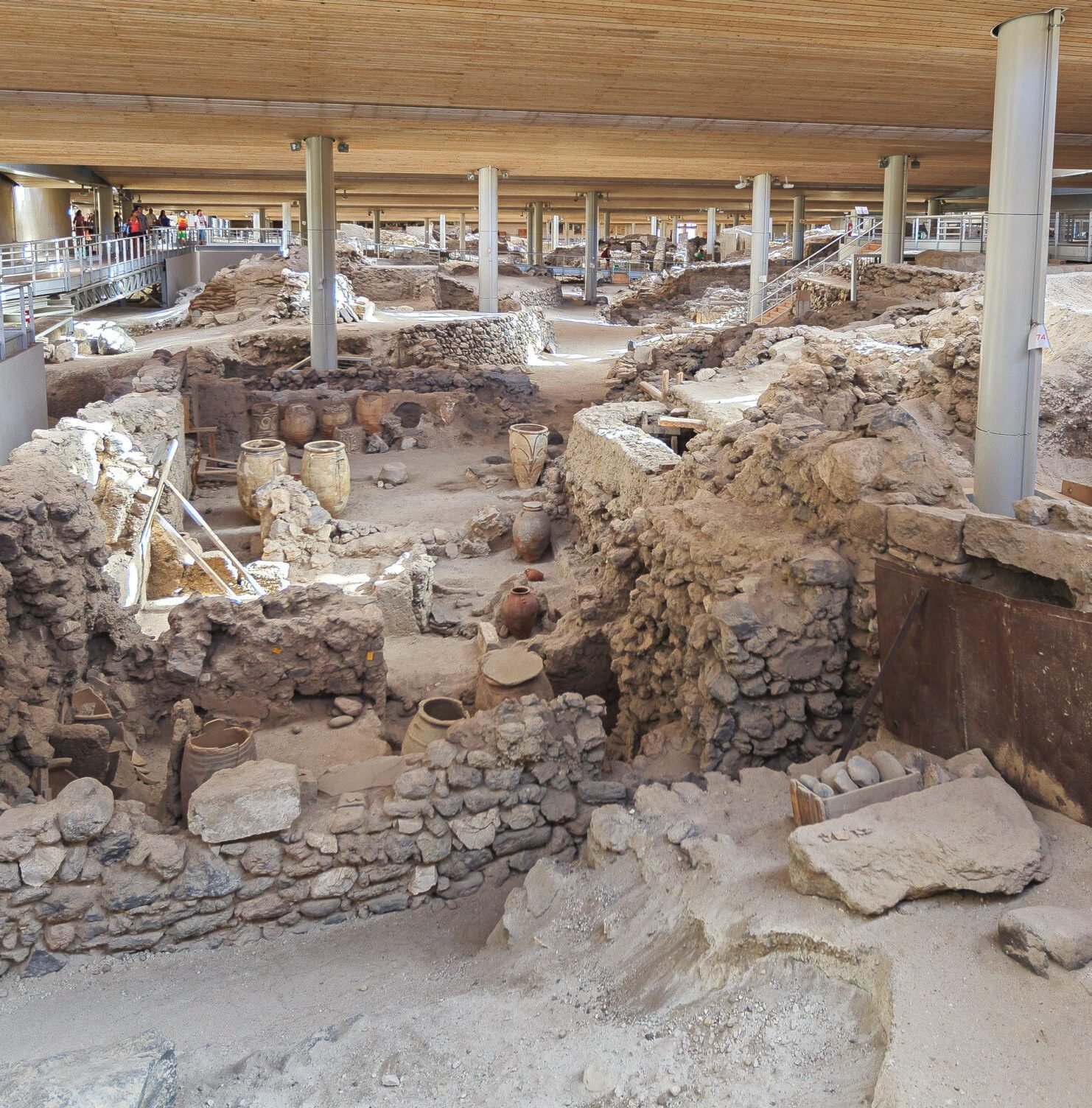The Akrotiri Archaeological Site sits on the southern coast of Santorini, near the modern village of Akrotiri. The site stands as one of the most remarkable Bronze Age settlements in the Aegean. Because of its excellent preservation, it allows visitors to walk through an ancient city that once flourished more than 3,600 years ago.
People first settled in the area around the 4th millennium BC. Over time, they built a thriving community that grew stronger during the 3rd millennium BC. During the 17th century BC, Akrotiri reached its peak as a wealthy urban center. Traders exchanged goods with Crete, Cyprus, Egypt, and mainland Greece. As trade expanded, residents built multi-story homes, organized paved streets, and created a complex drainage system.
However, the nearby volcano began to show signs of unrest. Strong earthquakes shook the island and damaged several buildings. Residents repaired their homes and prepared for daily life again. Soon afterward, the volcano erupted violently and covered the city in ash and pumice. The eruption froze Akrotiri in time, preserving its houses, pottery, tools, and artwork in exceptional detail.
Today, visitors can explore the site under a modern bioclimatic shelter that protects both the ruins and the guests. Wooden walkways cross above ancient streets and rooms, allowing clear views of the structures below. The West House, one of the most complete buildings, includes storage rooms, workshops, and elegant living spaces. Frescoes from the site now appear in the Museum of Prehistoric Thera in Fira, offering more insight into the art and culture of Akrotiri’s people.
Reaching the site is easy. It lies about 15 kilometers from Fira, and visitors can drive, take a taxi, or use the local bus. The road ends near the entrance, where a small parking area sits. The site opens every day except Tuesday, with longer hours during summer months. There is a small entry fee, while discounts apply for students and seniors. Combination passes often include other museums and sites across Santorini.
Because of the heat, mornings and late afternoons make the best visiting times. The shelter offers shade, but the air still warms quickly. Visitors should wear comfortable shoes, bring water, and carry sunscreen and a hat. Guided tours explain the layout and history of the city, helping visitors understand how the residents built, traded, and lived.
After exploring the Akrotiri Archaeological Site , travelers often walk to nearby attractions such as the Red Beach or the Lighthouse of Akrotiri. These locations add more beauty and variety to the day.



Comment (0)